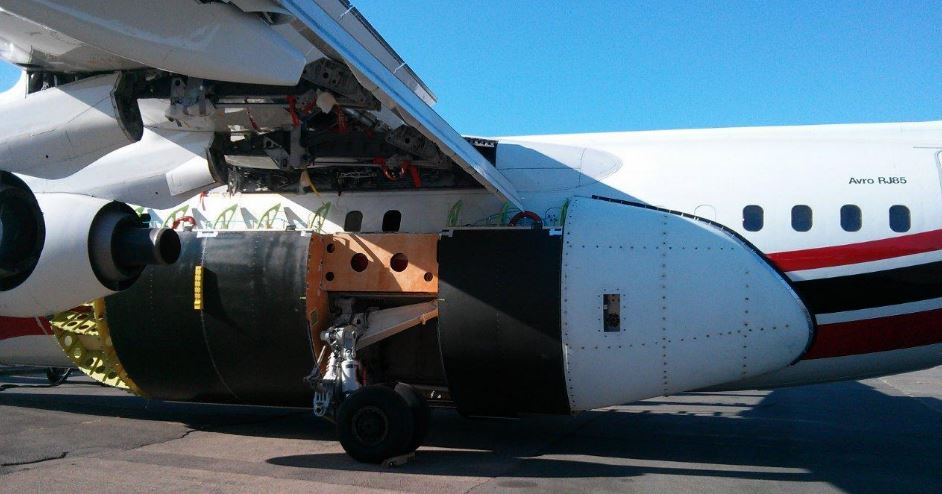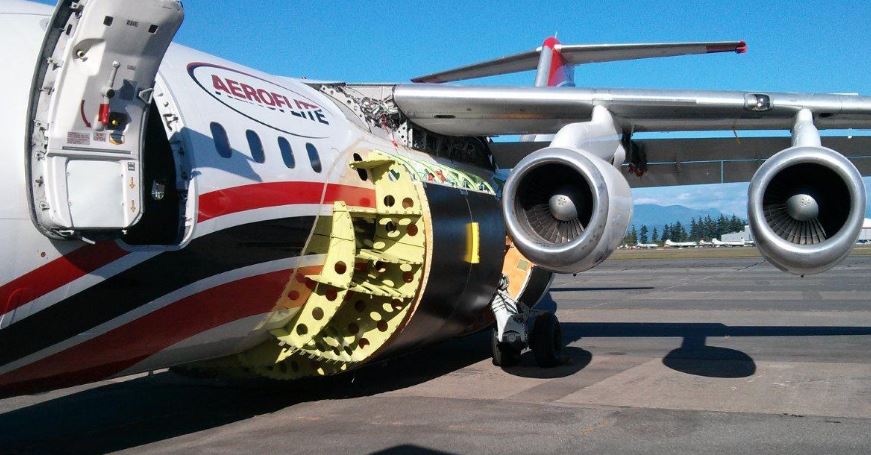We attempted to contact all four of the vendors that received contracts for next-generation air tankers that are still working to convert their aircraft into air tankers. We wanted to get updates on how close they are to being ready drop retardant over fires. Minden and Coulson returned our phone calls. 10 Tanker had their two DC-10s ready to go and fully certified when the contracts were announced, so their status is obvious.
As you may know, the USFS announced on May 6 that exclusive use contracts were going to be awarded for seven next generation air tankers. The activation of the contracts was held up by a protest from Neptune Aviation, but the awards finally went to.
- Minden Air Corporation; Minden, Nev., for 1 BAe-146
- Aero Air, LLC; Hillsboro, Ore., for 2 MD87s
- Aero Flite, Inc.; Kingman, Ariz., for 2 Avro RJ85s
- Coulson Aircrane (USA), Inc.; Portland, Ore., for 1 C130Q
- 10 Tanker Air Carrier, LLC; Adelanto, Calif., for 1 DC-10
Only one of the five companies had their air tanker fully certified and ready to go when the awards were announced — 10 Tanker Air Carrier and their DC-10. They put Tanker 910 to work around June 1. In fact, their second DC-10, Tanker 911, was activated on a Call When Needed (CWN) contract June 14 and both of them have been flying fires since then. The two DC-10s, which always carry 11,600 gallons, dropped approximately 698,000 gallons of retardant in the month of June.
The other four companies are finishing the tank installations and still have to obtain a Supplemental Type Certificate (STC) from the FAA and have to pass a static test, dropping while parked on the tarmac; then, finally a grid test during which they drop actual retardant from the air into a grid of hundreds of cups on the ground which will determine the volume and consistency of the drop pattern. As far as I know none of the four remaining companies have scheduled a grid test yet with the Interagency AirTanker Board, which must certify all air tankers under contract with the federal government.
Minden Air Corporation
We talked with Len Parker, the CEO of Minden, who told us that they are making good progress on their BAe-146, Tanker 46, and that they expect to make the deadline for full certification, which is in the first part of August. Their tank design is very different from Neptune’s design for their BAe-146 which uses cabin air pressure to assist in forcing the retardant out of the tank. Mr. Parker told us their tank totally relies on gravity, having more than 10 feet of vertical head pressure. When asked if the door system was constant flow, he said yes and no, explaining that it is more advanced than a typical constant flow system, and uses advanced technology.
The tank holds about 3,100 gallons, he said, and when empty weighs about 2,000 pounds less than other tanks that may be used on BAe-146s, meaning they would not have to carry reduced loads of retardant as often when density altitude is an issue on hot days at high altitude.
Tanker 46 has passed the static test and meets the required flow rates, Mr. Parker told us. They are still working on the STC, but expect to select a date for the grid test by July 12.
Minden has purchased a second BAe-146 and has already started converting it.
Coulson Aircrane (USA), Inc.
Britt Coulson sent us these photos that were taken June 28, 2013. He told us the aircraft, which holds 3,500 gallons, has been painted and they will apply the wrap, which we ran a photo of earlier, later this month. He said on July 2:
…most of the tank is now installed, gear and all flight controls are checked, tank doors are going on this week, hydraulics are being finished this week as is the floor to complete the tank install.
As you can see in the photo, there are wheels attached to the tank. Mr. Coulson told us they can remove or reinstall the tank in about 30 minutes.
They still have to obtain the STC and the other certifications.
The other two companies
We called and left messages at Aero Flite and Aero Air, but the calls and emails were not returned.
Aero Flite photos?
We received the two following photos from someone who told us that they show Aero Flite’s RJ85 (Tanker 160) external retardant tank being attached to the belly and sides of an aircraft last week. We can’t independently verify they are genuine, so for now we’ll just call them an artist’s conception of what their RJ85 may look like.





Have you ever heard anything from Aero Air?